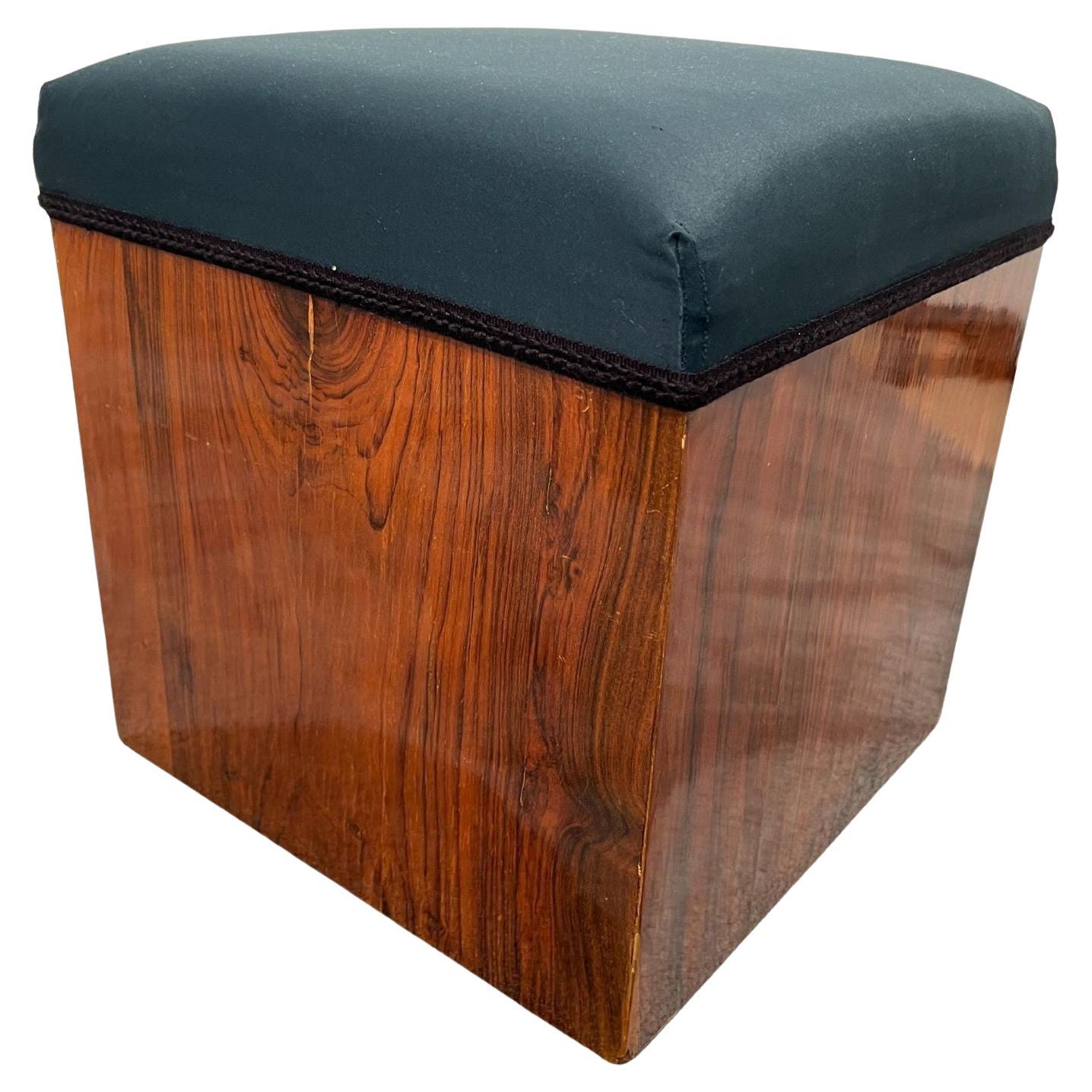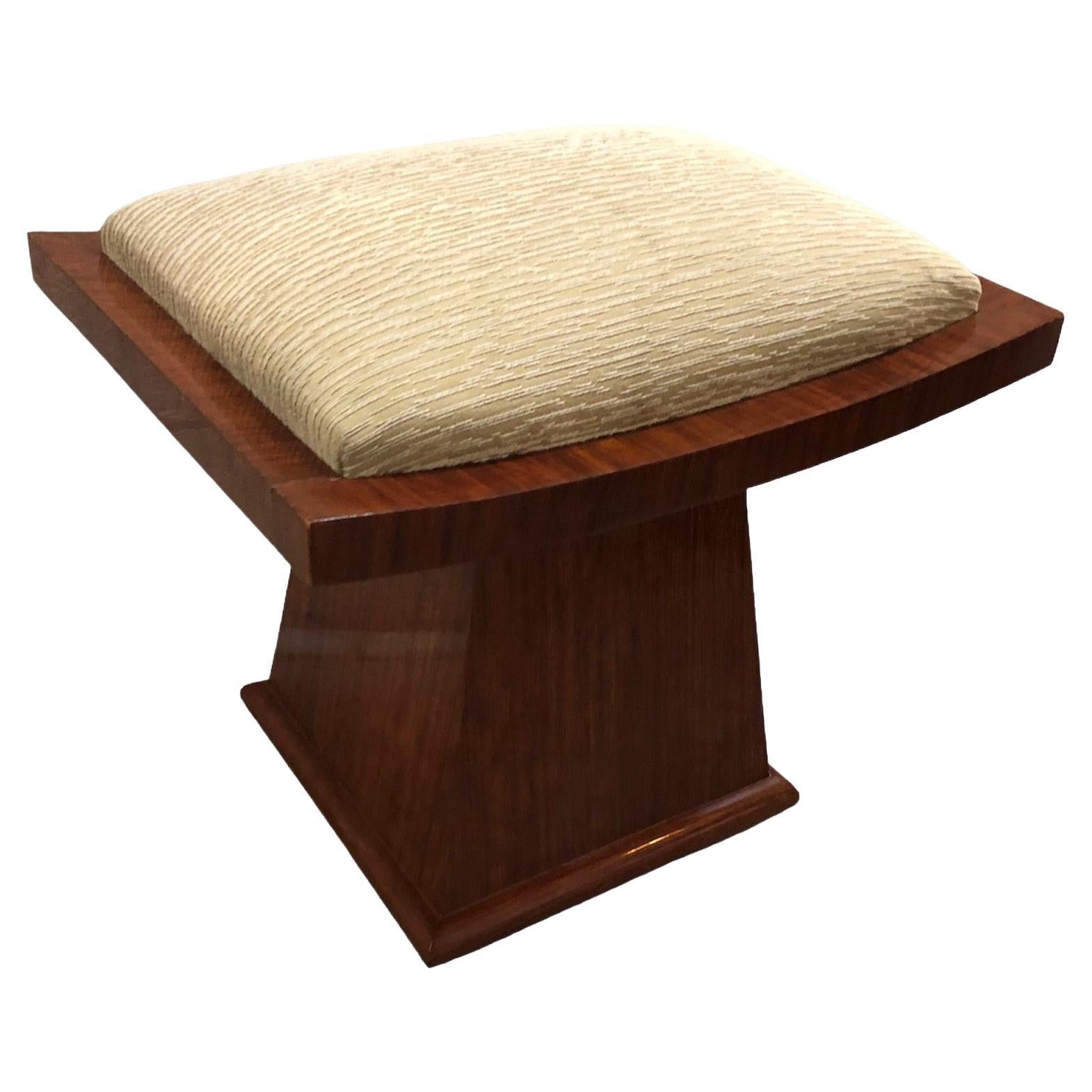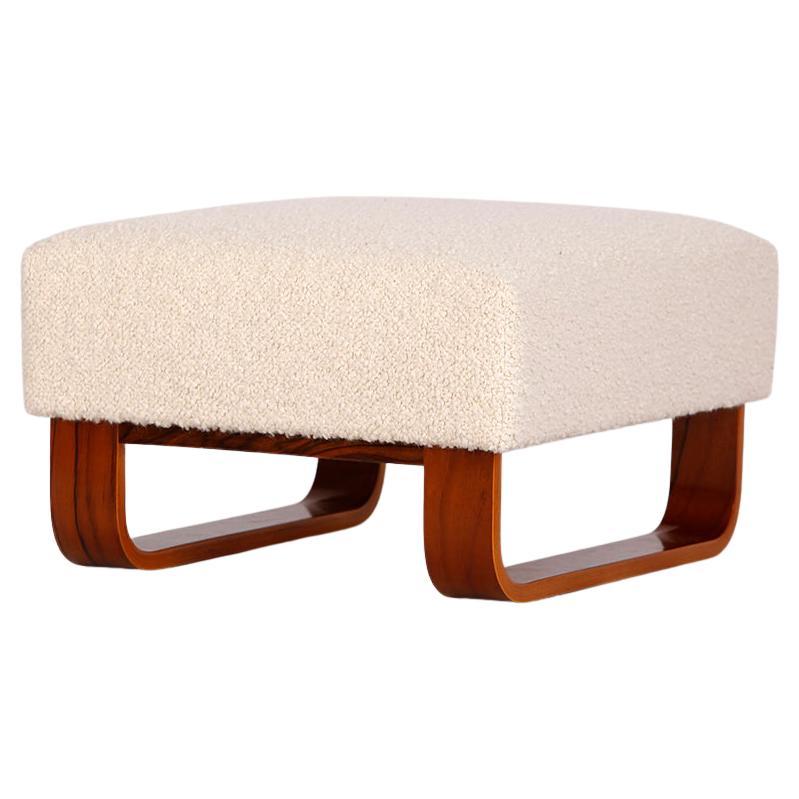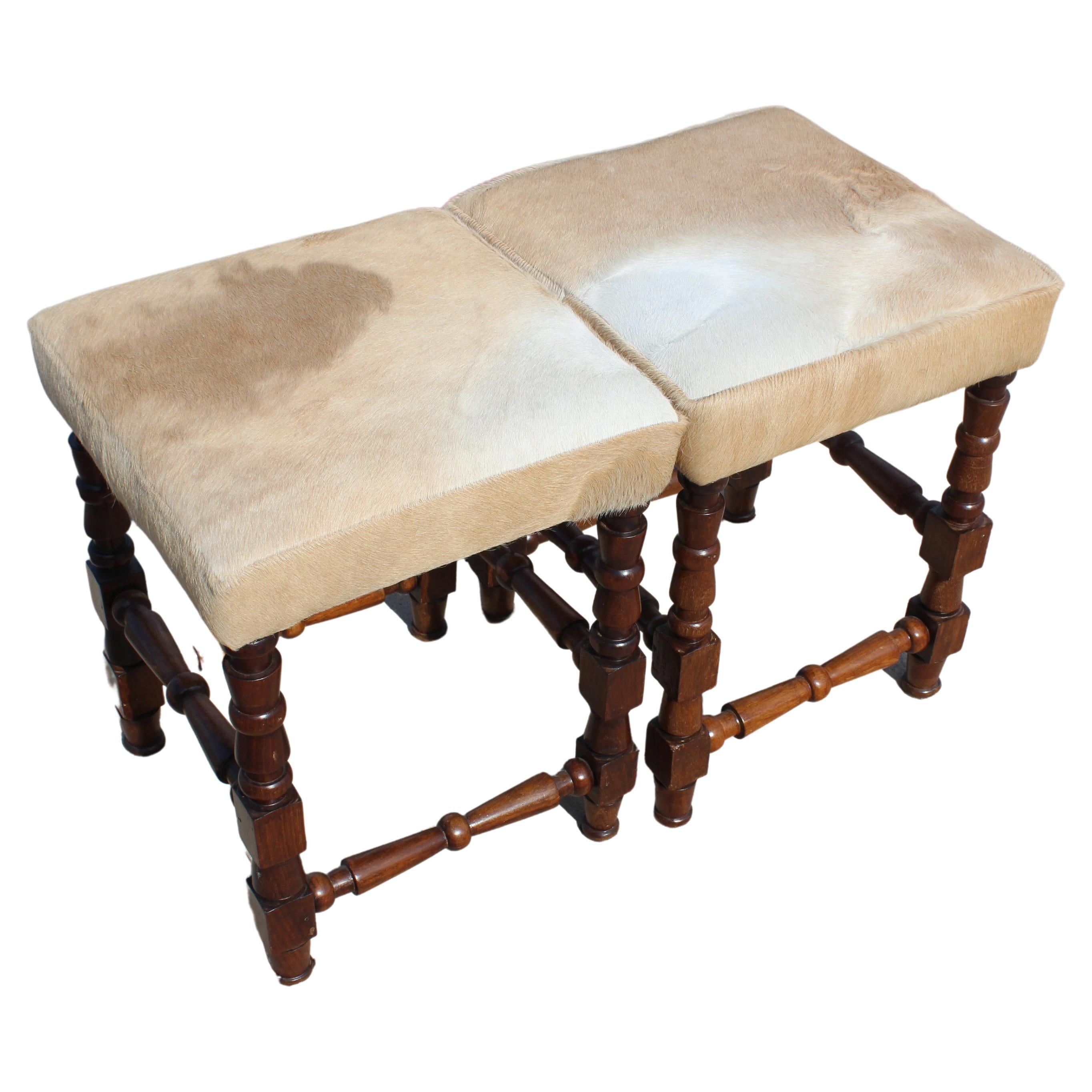Items Similar to French Deco Bench / Footstool, circa 1930 Made in France
Want more images or videos?
Request additional images or videos from the seller
1 of 9
French Deco Bench / Footstool, circa 1930 Made in France
About the Item
Bench has an X-shaped, tapered base in solid oak with a bronze stretcher and a leather covered seat.
- Attributed to:Maxime Old (Designer)
- Dimensions:Height: 16.15 in (41 cm)Width: 27.56 in (70 cm)Depth: 19.3 in (49 cm)
- Style:Art Deco (Of the Period)
- Place of Origin:
- Period:
- Date of Manufacture:circa 1940
- Condition:Excellent vintage condition; very good quality oak, no structural damages; recovered around 2007 and no damages to leather.
- Seller Location:Jersey City, NJ
- Reference Number:1stDibs: LU807312159733
About the Seller
4.6
Vetted Seller
These experienced sellers undergo a comprehensive evaluation by our team of in-house experts.
Established in 2008
1stDibs seller since 2005
370 sales on 1stDibs
Typical response time: 1 to 2 days
- ShippingRetrieving quote...Ships From: Jersey City, NJ
- Return PolicyThis item cannot be returned.
More From This SellerView All
- Coffee Table after Maxime Old, France Circa 1930By Maxime OldLocated in Jersey City, NJWooden coffee table after Maxime Old has a matchbook walnut veneer top that is supported by round dowels that go through the three suspended shelves ...Category
Vintage 1930s French Mid-Century Modern Coffee and Cocktail Tables
MaterialsWood
- French Deco Ladies Secretary, Chest in Wood Circa 1930Located in Jersey City, NJSecretary, chest with a drop front and two lower doors that open to reveal a polished mahogany interior. Images five, six, and seven show the piece's interior drawers and shelves.Category
Vintage 1930s French Mid-Century Modern Secretaires
MaterialsWood
- Gilt Bronze Table Lamps by Gênet et Michon, circa 1930, Made in FranceBy Gênet et MichonLocated in Jersey City, NJPair of French table lamps by Gênet et Michon. Each lamp has a round base with two fluted arms, in gilt bronze, separated by a round crystal ball. Each of the four, bronze, shade ha...Category
Early 20th Century French Art Deco Table Lamps
MaterialsCrystal, Bronze
- Mahogany Settee Made in France, Circa 1780Located in Jersey City, NJSettee has a mahogany frame with tapered hand front legs with hand-carved decorative flowers on each leg and the seat back. The cushion is upholstered in a modern striped fabric.Category
Antique 1790s French Empire Settees
- Pair of Sconces, circa 1950 Made in FranceBy PhilipsLocated in Jersey City, NJPair of flush mount wall lights in brushed aluminum that can be installed horizontal or vertical. The interlocking design allows the front to glide up or down makes it easy to change...Category
Vintage 1950s French Mid-Century Modern Wall Lights and Sconces
- French Ceiling Fixture in Clear and Frosted Glass Circa 1930Located in Jersey City, NJAn original 1930's French ceiling light, in excellent vintage condition, has a demi-lune-shaped frosted glass shade, nickeled fittings, and an encompassing clear glass disk.Category
Vintage 1930s French Art Deco Chandeliers and Pendants
You May Also Like
- Cubic Art Deco Stool, Walnut Veneer, France, circa 1930Located in Regensburg, DEBeautiful original Art Deco stool from France about 1930. Walnut veneered and polished. Covered with anthracite fabric and border finishing. Dimensions: H 38 cm x W 36 cm x D 37 cm.Category
Vintage 1930s French Art Deco Footstools
MaterialsFabric, Walnut
- Art Deco Stool in Wood, Country France, 1930Located in Ciudad Autónoma Buenos Aires, CStools Art Deco. Material: wood You want to live in the golden years, this is the stool that your project needs. We have specialized in the sale of Art Deco and Art Nouveau styles s...Category
Vintage 1930s French Art Deco Stools
MaterialsWood
- Boucle Bench Stool Footstool, 1960sLocated in Wien, ATThis midcentury stool footstool was made in the 1960s in former Czechoslovakia. The upholstery consists of a coconut fiber core, covered with a wonderfully soft English boucle cover ...Category
Mid-20th Century Czech Mid-Century Modern Stools
MaterialsWool, Walnut
- Art Deco Stool Ottoman, FootstoolLocated in Vienna, ATWalnut frame with curved legs and new upholstery with Lelievre fabric. Made by an unknown Austrian furniture maker, circa 1930.Category
Vintage 1930s Austrian Art Deco Footstools
MaterialsWalnut, Upholstery
- Carved French footstool, newly upholstered in a cowhide.Located in Houston, TXElevate your space with our carved hardwood footstool, a timeless masterpiece newly upholstered in a one-of-a-kind cowhide. This footstool exudes elegance, blending intricately carve...Category
Vintage 1960s Brazilian Mid-Century Modern Footstools
MaterialsLeather, Hardwood
- Art Deco Stool, Material Iron, Country France, 1930Located in Ciudad Autónoma Buenos Aires, CStools Art Deco. Material: iron You want to live in the golden years, this is the stool that your project needs. We have specialized in the sale of Art Deco and Art Nouveau styles since 1982.If you have any questions we are at your disposal. Pushing the button that reads 'View All From Seller'. And you can see more objects to the style for sale. Why are there so many antiques in Argentina? In the 1880 – 1940 there was a grate wave of immigration encouraged by the periods of war that were taking place. 1st World War took place between 1914 and 1918 2nd World War took place between 1939 and 1945 The immigrants options were New York or Buenos Aires. Tickets were cheap and in Buenos Aires they were welcomed with open arms, as it was a country where everything was still to be done. Argentina was the country of new opportunities, labour was needed and religious freedom was assured, in many cases the of the family travel first until they were settled and then the rest of the family members join them. In the immigrant museum “Ellis Island Immigrant Building” in New York you can se the promotional posters of the boats that would take them to a new life. Between the years 1895 and 1896, Argentina had the highest DGP (gross domestic product) per capita in the world according to the Maddison Historical Statistics index, this situation arose due to the large amount of food being exported to European countries, which were at war. The Argentinean ships left the port of Buenos Aires with food, but they returned with furniture, clothes and construction elements, (it´s common to see this the old buildings of the historic neighbourhood of San Telmo, the beams with the inscription “Made in England)”, as well as many markets that were built in Buenos Aires, such us the San Telmo Market, whose structure was brought by ship and afterwards assembled in 900 Defensa Street. With the great influence of European immigrants living in the country, the children of the upper classes travelled to study in France, resulting in the inauguration of “La Maison Argentinienne”, on 27th of June 1928, in the international city of Paris, which hosted many Argentinians that were studying in Frace. It´s the fourth house to be built after France, Canada and Belgium, being the first Spanish-speaking one. Still in place today (17 Bd Jourdan, 75014, Paris, France). Many of the children of these wealthy families who attended international art exhibitions, museums and art courses abroad, took a keen interest in the European style. This is why Buenos Aires was at the time referred as “The Paris of South America”. Between the years 1890 and 1920 more than a hundred Palaces were built on Alvear Avenue the most exclusive avenue in Buenos Aires. Today some of these palaces have been transformed into museums, hotels and embassies. In the year 1936, the Kavanagh building was inaugurated, it was the tallest reinforced concrete building in South America. During 1994 the American Society of Civil Engineers distinguished it as an “international engineering milestone”, and it´s now considered a World Heritage of Modern Architecture. At the time was common to hire foreign architects such as Le Corbusier, who visited Buenos Aires/Argentina in 1929 and in 1948 he drew up the blueprints for a house built in La Plata City (which was declared a World Heritage Site). In 1947, the Hungarian architect Marcelo Breuer designed “Parador Ariston” in the seaside city of Mar del Plata. After an Argentinean student at Harvard University convinced him to come to Argentina. He worked on an urban development project in the Casa Amarilla, area of La Boca. The Ukrainian architect, Vladimiro Acosta, arrives in Argentina in 1928 and worked as an architect until que moved to Brazil. Antonio Bonet, a Spanish architect who worked with Le Corbusier in Paris, arrives in Argentina in 1937, where he carried out several architectural works and in 1938 designs the well-known BFK chair. Andres Kálnay, of Hungarian origin, made around 120 architectural masterpieces, among which the former Munich brewery stands out, he even made the furniture’s design. The German architect, Walter Gropius, director of the Bauhaus, lived in Argentina, where he wrote articles for “Sur” magazine and founded in Buenos Aires, an architectural firm with Franz Möller, who was also an architect, where he built two houses. At the same time several famous designers decided to immigrate to Argentina, among them we can find the well-known French designer, Jean-Michel Frank, who arrived in the country in 1940 and also worked for the Rockefeller family. Special pieces were made, which were sold exclusively in the country, such as the well-known German company “WMF”, who sold their products by catalogue, which were chosen by the ladies of high society in the list of wedding gifts, as well as the pieces designed by Christofle. The Swiss sculptor Alberto Giacometti, made special pieces for Argentinean mansions. In 1904 the first Jansen branch outside Paris was established in Buenos Aires, as the Argentinean clientele demanded a large amount of furniture, from the end of the 19th century to the mid-20th century. In 1970, the brand Rigolleau Argentina made pieces authorised by Lalique. The brands Maple and Thompson also set up shop in the country. The French plastic artist, Marcel Duchamp moved to Argentina in 1918-1919. Glass signed Gallé, Charder, Leverre, Schneider, Muller and other French firms. They were bought in flower shops and were given to ladies with beautiful floral arrangements. Some furniture manufacturers travelled to international fairs and bough the patterns to produce the furniture in Argentina, such as the furniture firm Englander and Bonta, who bought the patterns ins Italy. It is worth mentioning that in Argentina we have the largest community of Italians outside...Category
Vintage 1930s French Art Deco Stools
MaterialsIron
Recently Viewed
View AllMore Ways To Browse
Old Leather
Old Oak Furniture
Footstool Vintage Furniture
Leather Footstool Used
X Footstools
Brown Leather Footstools
Leather Covered Bench
Old Maxime
Deco Bench Seat
Solid Bronze Bench
Vintage Bench Seat Cover
Vintage Bench Seat Covers
Leather Footstool Bench
French Leather Footstools
Art Deco Leather Footstools
Used Footstools
Footstool Used
With Footstool





